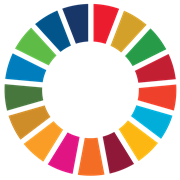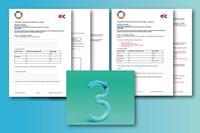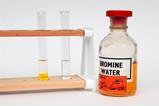Review the chemistry behind cisplatin and its role in fighting cancer
This resource will aid your 16–18 student’s understanding of the chemistry behind anticancer drugs and help them appreciate the interdisciplinary nature of drug design and action by learning more about cisplatin and other platinum anticancer drugs. Use this for revision after or to supplement the resource Cisplatin and drug design.
UN sustainable development goal 3: ensure healthy lives and promote well-being for all at all ages has never been more relevant, with Covid-19 not only having direct negative impacts on health, but the pandmeic leading to delays in the diagnoses and treatments of cancers, too.

Sustainability in chemistry

This resource accompanies the Education in Chemistry article Chemists’ role in the fight against disease where you will find more support and suggestions for how to connect your current chemistry teaching with UN sustainable development goal 3: ensure healthy lives and promote well-being for all at all ages. Link directly to the goal to give this activity an engaging and relevant context.
The tasks
Task 1 – Knowledge retrieval
- Carry out as a ‘do now’ activity to help recall prior knowledge.
Task 2 – Cisplatin and other platinum anticancer drugs
- Deliver as a whole class activity or as a worksheet after/during the teaching of cisplatin.
- Students could self-assess their answers or you could model answers under a visualiser and have a class discussion.
Task 3 – Cisplatin comprehension/quiz
- Use as an extension task or as wider reading for students to appreciate the history behind cisplatin.
- The quiz could be done as a comprehension activity or you could quiz students using the questions as a starter, after setting the text as wider reading for homework.
Cisplatin and cancer
It was over 100 years after cisplatin was first synthesised in 1845 that its anticancer properties were discovered.
Barnett Rosenberg and his group of scientists found that cisplatin was successful against cancer in mice in 1965 after carrying out an earlier series of experiments looking at the effects of electric currents on the growth of E. coli.
In 1971, clinical trials in humans took place and cisplatin was licensed for use in 1979 in the UK.
Cisplatin is a chemotherapy drug; patients are given a solution of cisplatin as an intravenous drip. Cisplatin is used against testicular, ovarian, lung, bladder, colorectal and other cancers.
Link to other goals covered in this series, such as 10: reduced inequalities and 17: global partnership, which uses the Covid-19 pandmeic to provide context to students and show how scientists work together internationally.
Find more resources
- Find experiment notes and a student sheet, suitable for 16–18 leaners, on the Analysis of aspirin tablets.
- Link to careers with this video profile of a research assistant helping to detect diseases, such as cancer, earlier.
- Use this feature on 4D printing to show how developments in chemistry and technology are advancing medicine, with a worksheet activity exploring the chemistry of polymers used in 3D and 4D printing.
- Chemistry, medicine and genetic analysis will help you highlight the importance of the sciences working alongside each other to make lifesaving discoveries.
Downloads
Transition metals and anticancer drugs: student worksheet
Handout | PDF, Size 0.19 mbTransition metals and anticancer drugs: student worksheet
Editable handout | Word, Size 0.16 mbTransition metals and anticancer drugs: worksheet answers
Handout | PDF, Size 0.18 mbTransition metals and anticancer drugs: worksheet answers
Editable handout | Word, Size 0.14 mb
























No comments yet